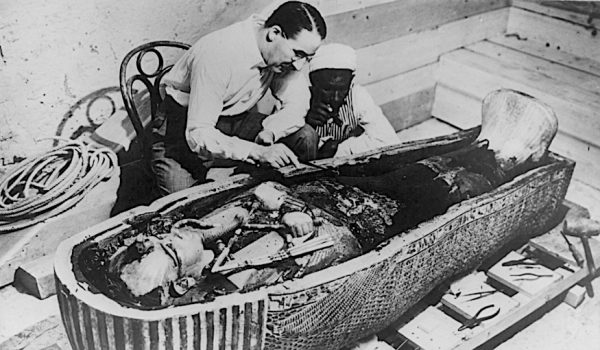Profile of the Day: Tutankhamun
On this day in 1923, archaeologist Howard Carter unsealed the burial chamber of Egyptian pharaoh Tutankhamun. The tomb of the boy king is considered to be one of the best preserved and most intact pharaonic tombs ever found in the Valley of the Kings.

Image: Howard Carter beside the coffin of King Tutankhamen / Library of Congress
Carter had spent many years excavating in the Valley of the Kings in search of the undiscovered tomb of the young pharaoh, who died around the age of 18. Finally, on November 4, 1922, Carter uncovered what would be the steps that led to the door of Tutankhamun’s tomb. Smaller than the tombs of other Egyptian pharaohs, the tomb’s interior was made up of four rooms that were virtually intact.
On February 16, 1923, Carter carefully unsealed the burial chamber. Once inside, Carter discovered a sarcophagus with three coffins nested inside one another. The last was a solid gold coffin that held the mummified remains of Tutankhamun, which had been preserved for over 3,000 years. Thousands of items were found in the tomb, including face mask, thrones, jewelry, weapons, and statues. It took 10 years to carefully remove and catalog all the items.
The state of preservation and number of valuable artifacts found in Tutankhamun’s tomb has made it one of the most significant discoveries in the history of Egyptian archaeology.
Explore Tutankhamun’s family tree on Geni and share how you’re connected to the Egyptian pharaoh.







 Genealogy Discussions
Genealogy Discussions Genealogy Projects
Genealogy Projects Popular Genealogy Profiles
Popular Genealogy Profiles Surnames
Surnames The Geni Blog
The Geni Blog The World Family Tree
The World Family Tree